The right suspension system for your vehicle will help you overcome road obstacles and severe driving conditions while you enjoy a more comfortable ride. It will keep your ride level. And improve your handling.
What’s not to love?
All you need to do is figure out what suspension system is just right for your vehicle. But to do that, first ask yourself what you need your new system to do.
Will you rely on your suspension to go over speed bumps as you drive your granny to the mall? Or will you rely on your suspension to help you get the job done on the construction site?
HOW THE SUSPENSION SYSTEM WORKS
The suspension is a complex system, made up springs, dampeners, and other steering components. The complete system assists your wheels in responding smoothly to various obstacles on the road.
And this serves two main functions:
It enhances your handling and braking characteristics for more control over the vehicle. This means your drives will be safer.
It also smooths out your ride. This means your drives will be more comfortable.
The suspension system achieves this by acting as the “middleman” between the road and your vehicle’s chassis.
You can choose to modify and upgrade individual suspension components. Each one will improve your handling, comfort, or both.
So the right suspension system for you will need to deliver the right balance between handling and comfort.
UPGRADING WITH SPRINGS
The springs are at the heart of your suspension system.
Their design allows them to absorb the vertical energy which is generated from your wheels as they pass through road obstacles. This stops the energy from transferring up to your vehicle’s chassis.
They also return the wheels to their normal height after vertical travel.
Suspension springs are available in three designs. Naturally, each design has a unique set of benefits.
Coil Springs
Coil Springs are probably what first comes to your mind when you think about suspension springs. They look like a slinky located above the wheels. They are great at handling vertical energy when they are installed in all four corners of your vehicle.
Some coil springs feature a progressive spring rate for stiffer dampening in demanding situations, and a softer feel for your daily drive.
Leaf Springs
Leaf springs are able to handle more weight handling compared to coil springs. But your ride won’t be as smooth.
Their design looks like a stack of think steel leaves. The curved shape of each leaf is able to bend and flex as your vehicle’s wheels drive over road obstacles and difficult terrain.
Leaf springs are better suited for SUVs, heavy-duty trucks, and rear-wheel-drive vehicles.
The tradeoff you’ll be making when choosing leaf springs is saying goodbye to a super soft ride.
Torsion Bars
Torsion bars are different from both coil springs and leaf springs. Instead of absorbing the wheels’ vertical energy by compressing and flexing, they twist.
Their design allows them to connect their frame end to your vehicle’s control arm, which means it will always stay in one place. Their control arm end remains free to move.
So when your wheels travel over rough terrain, their vertical energy twists the torsion bar.
When it snaps back to its place, the wheels are returned to their normal position.
Torsion bars are better suited for front-end suspensions.
UPGRADING WITH SHOCKS & STRUTS
If ride quality is important to you, you need to invest in high quality shock absorbers. Otherwise you’ll need to get used to jerky rides.
Shocks, or dampers (they’re the same thing), are able to control and slow down the upward and downward movement of the springs. They do this by wrangling the vertical energy in the springs for a bounce-free ride.
But that’s not all.
Shocks also need to dissipate heat. They are durable, but sensitive to higher temperatures. This means that they heat up easily, which lowers their oil’s viscosity and hinders their ability to wrangle.
It’s even possible that they heat up so much that their oil starts to bubble over. And this makes theme completely useless.
This condition is referred to as shock fade, and it’s to be avoided.
Shocks are available in three basic designs. Again, each one has its unique pros and cons.
Dual-Tube Shocks
Dual-Tube shocks are most commonly used on cars, SUVs, and trucks.
Their design is made up of an inner and outer tube chamber, which is where their name comes from.
The inner chamber houses the shock’s oil supply and piston.
The outer chamber houses extra “emergency” oil, and is typically charged with low-pressure nitrogen. The gas resists the oil flow and dampens your wheels’ movement for a smooth ride.
And this is exactly what makes these shocks so popular across many vehicle types!
Who can say no to a comfortable ride?
Dual-tube shocks are also more durable than monotube shocks. They sound great, don’t they?
But they’re not suitable for racing or off-road applications. The reason is that they will overheat under severe driving conditions, resulting in shock fade.
Monotube Shocks
You can probably guess that monotube shocks are designed with a single chamber. This chamber houses the oil supply, the pistons, and the high-pressure gas.
These shocks allow the oil to be cooled by the ambient air, which lowers the chance of shock fade.
They are stiffer and tighter compared to twin-tube shocks and foam cell shocks. This makes them the perfect choice for racing applications or heavy-duty off-road applications.
And what are the cons?
Monotube shocks are longer than twin-tube shocks, making them more difficult to install. They are also more likely to dent or sustain damage because of their exposed single-chamber design.
Foam Cell Shocks
Foam cell shock absorbers have the same design as dual-tube shocks, with once small exception:
The low-pressure gas in their outer-chamber is not free-flowing, but stored in several small capsules.
This is done to separate the oil from the gas, to eliminate the risk of foaming oil without making any compromises with the comfort of your ride.
The downside is that foam cell shocks are prone to overheating. They can even burst if the oil’s temperature rises too much. And if that happens, you’ll need to get new shocks.
Coilover Shocks
Coilover shocks offer the best damping characteristics without torsional stress. This makes them perfect for high-performance and off-road applications.
Their design features a long-travel monotube shock absorber wrapped around with a coil spring. Most coilover shocks will even allow you to tune your vehicle’s height and stiffness.
And this means you can decide what tradeoff you want to make between ride comfort and control based on your specific driving needs.
Some coilover shocks can even be modified with different coil springs. This allows you to experiment and find the perfect spring rate for you!
UPGRADING WITH LIFT KITS
If you agree with the saying that “bigger is better”, and you’re a fan of the “big-rig, oversized tires” look, you need a lift kit!
A lift kit will give you respect on the road. And it will allow you to get over hard-code obstacles when you’re off the road.
If you’re a fan of off-roading, you need extra height to climb up those boulders.
And as most stock SUVs and trucks don’t come out of the furnace with a tall stance, a lift kit will ensure you’re not constantly getting stuck or trapped.
But that’s not the only benefit.
As your vehicle gains height, the distance your suspension travels also increases. And this means you’ll be able to handle both taller and deeper road (or off-road) obstacles.
A lift kit can also give your rig a heavy-duty style. Your vehicle will look commanding and intimidating. And you’ll get a better view of the road.
And if you love big rims and huge tires?
A lift kit will provide the needed clearance to fit them.
Rear Lift Kits
Add-A-Leaf Kits give you inches by inserting extra leafs into your leaf spring packs. These extra leafs boost your vehicle up without any noticeable changes to your ride height.
Block Lift Kits work by inserting spacer blocks between your vehicle’s axle and its rear coil springs. The result is a boost of a couple of inches while keeping your stock ride
Replacement Springs will deliver the most height. And a new set of springs will not only give the ride height you want – it will give you a great feel behind the wheel.
Front Lift Kits
Naturally, lifting your vehicle’s front is more complex than the rear. This is because of all of the steering linkages and components which are found there.
Spindle Lift Kits replace your stock spindles to add height.
Steering Knuckle Kits can also replace your stock steering knuckles to gain more height.
Control Arm Kits are used to form connections between the wheels hubs and your vehicle’s frame. These kits are shorter than stock, which changes your suspension angles to bring more height. Keep in mind you will also need to invest in new coil springs because of the new suspension geometry.
Spacers can lift your vehicle’s front end by fitting under or over your front coil springs.
Add-A-Leaf Kits are perfect for heavy-duty trucks and SUVs. They will bring your ride to a new height by adding extra leafs to the stacks.
UPGRADING WITH LOWERING KITS
If you’re into high performance driving, you need your ride vehicle to be lower.
A lowering kit will not only bring your swanky import, classic hot rod, or lowrider truck closer to the ground – it will give you a sleek, head-turning style and sporty handling for a real thrill on the road.
The great advantage of a shorter stance is in your vehicle’s lowered center of gravity. The result is truly responsive handling, especially when you’re turning narrow corners.
The kits will also stiffen your suspension, and tighten the steering response. This will reduce body roll and squat when you’re making fast maneuvers, as well as minimizing on nose dives when you step hard on the brakes.
But all of these benefits do come at a cost. And that cost is rider comfort.
The good news is that innovations in technology allow for a more progressive spring rate which gives a stiff response when you need it and a softer ride for comfort the rest of the time.
Lowering Lift Kit Components
In much the same way as with regular lift kits, fitting your ride with a lowering kit involves replacing or upgrading different suspension components.
Leaf Springs will drop down your SUV or truck by bringing your leaf spring shackles and hangers closer to your vehicle’s frame. And if you’re looking for an extreme drop? Replace your leaf springs entirely.
Lowering Coil Springs will lower your vehicle’s height with very minimal mods. Plus, in most cases the springs are stiffer than your stock springs – the result is a tighter cornering response and a limited suspension travel to lower the risk of bottoming out.
Lowering Torsion Bar Keys act by rotating the torsion bar in a manner which moves the wheels higher relative to your vehicle’s frame for up to 3” of drop. A benefit is that you get to keep your stock ride quality.
Lowering Spindles lower your stance by moving your wheels closer to your vehicle’s frame. They will also maintain your suspension travel to maintain a smoother ride.
Control Arms will drop your frame down while bringing your wheels up. This will give your ride a dropped look without actually lowering its suspension travel. If you want a bigger drop, just combine the control arms with new spindles.
UPGRADING WITH SWAY BARS & STRUT BARS
The suspension system improves your handling and makes your rides more comfortable by changing the way your wheels respond to road obstacles and terrain.
But there’s another way to go about this. And it’s by tightening up your chassis.
Remember, the chassis is a VIP (very important performance) factor. And it shouldn’t be overlooked.
So if you’re a victim of shaky steering, body roll, and diminished vehicle performance, consider installing anti-sway bars.
They will give you a more stable ride, and you’ll definitely gain the confidence you want to have when driving on tougher terrain.
Another option for making your chassis more rigid is by bolting on a strut bar. With a strut bar, your next high-speed turn won’t cause your vehicle to twist and flex. And it’s precisely that twisting and flexing that lowers your steering effectiveness.
And you know what?
Strut bars don’t need any special mods to install – just bolt them onto your strut towers and begin enjoying more torsional stiffness and improved handling.
" alt="Rough Country Suspension" width="750" height="250" />
The right suspension system for your vehicle will help you overcome road obstacles and severe driving conditions while you enjoy a more comfortable ride. It will keep your ride level. And improve your handling.
What’s not to love?
All you need to do is figure out what suspension system is just right for your vehicle. But to do that, first ask yourself what you need your new system to do.
Will you rely on your suspension to go over speed bumps as you drive your granny to the mall? Or will you rely on your suspension to help you get the job done on the construction site?
HOW THE SUSPENSION SYSTEM WORKS
The suspension is a complex system, made up springs, dampeners, and other steering components. The complete system assists your wheels in responding smoothly to various obstacles on the road.
And this serves two main functions:
It enhances your handling and braking characteristics for more control over the vehicle. This means your drives will be safer.
It also smooths out your ride. This means your drives will be more comfortable.
The suspension system achieves this by acting as the “middleman” between the road and your vehicle’s chassis.
You can choose to modify and upgrade individual suspension components. Each one will improve your handling, comfort, or both.
So the right suspension system for you will need to deliver the right balance between handling and comfort.
UPGRADING WITH SPRINGS
The springs are at the heart of your suspension system.
Their design allows them to absorb the vertical energy which is generated from your wheels as they pass through road obstacles. This stops the energy from transferring up to your vehicle’s chassis.
They also return the wheels to their normal height after vertical travel.
Suspension springs are available in three designs. Naturally, each design has a unique set of benefits.
Coil Springs
Coil Springs are probably what first comes to your mind when you think about suspension springs. They look like a slinky located above the wheels. They are great at handling vertical energy when they are installed in all four corners of your vehicle.
Some coil springs feature a progressive spring rate for stiffer dampening in demanding situations, and a softer feel for your daily drive.
Leaf Springs
Leaf springs are able to handle more weight handling compared to coil springs. But your ride won’t be as smooth.
Their design looks like a stack of think steel leaves. The curved shape of each leaf is able to bend and flex as your vehicle’s wheels drive over road obstacles and difficult terrain.
Leaf springs are better suited for SUVs, heavy-duty trucks, and rear-wheel-drive vehicles.
The tradeoff you’ll be making when choosing leaf springs is saying goodbye to a super soft ride.
Torsion Bars
Torsion bars are different from both coil springs and leaf springs. Instead of absorbing the wheels’ vertical energy by compressing and flexing, they twist.
Their design allows them to connect their frame end to your vehicle’s control arm, which means it will always stay in one place. Their control arm end remains free to move.
So when your wheels travel over rough terrain, their vertical energy twists the torsion bar.
When it snaps back to its place, the wheels are returned to their normal position.
Torsion bars are better suited for front-end suspensions.
UPGRADING WITH SHOCKS & STRUTS
If ride quality is important to you, you need to invest in high quality shock absorbers. Otherwise you’ll need to get used to jerky rides.
Shocks, or dampers (they’re the same thing), are able to control and slow down the upward and downward movement of the springs. They do this by wrangling the vertical energy in the springs for a bounce-free ride.
But that’s not all.
Shocks also need to dissipate heat. They are durable, but sensitive to higher temperatures. This means that they heat up easily, which lowers their oil’s viscosity and hinders their ability to wrangle.
It’s even possible that they heat up so much that their oil starts to bubble over. And this makes theme completely useless.
This condition is referred to as shock fade, and it’s to be avoided.
Shocks are available in three basic designs. Again, each one has its unique pros and cons.
Dual-Tube Shocks
Dual-Tube shocks are most commonly used on cars, SUVs, and trucks.
Their design is made up of an inner and outer tube chamber, which is where their name comes from.
The inner chamber houses the shock’s oil supply and piston.
The outer chamber houses extra “emergency” oil, and is typically charged with low-pressure nitrogen. The gas resists the oil flow and dampens your wheels’ movement for a smooth ride.
And this is exactly what makes these shocks so popular across many vehicle types!
Who can say no to a comfortable ride?
Dual-tube shocks are also more durable than monotube shocks. They sound great, don’t they?
But they’re not suitable for racing or off-road applications. The reason is that they will overheat under severe driving conditions, resulting in shock fade.
Monotube Shocks
You can probably guess that monotube shocks are designed with a single chamber. This chamber houses the oil supply, the pistons, and the high-pressure gas.
These shocks allow the oil to be cooled by the ambient air, which lowers the chance of shock fade.
They are stiffer and tighter compared to twin-tube shocks and foam cell shocks. This makes them the perfect choice for racing applications or heavy-duty off-road applications.
And what are the cons?
Monotube shocks are longer than twin-tube shocks, making them more difficult to install. They are also more likely to dent or sustain damage because of their exposed single-chamber design.
Foam Cell Shocks
Foam cell shock absorbers have the same design as dual-tube shocks, with once small exception:
The low-pressure gas in their outer-chamber is not free-flowing, but stored in several small capsules.
This is done to separate the oil from the gas, to eliminate the risk of foaming oil without making any compromises with the comfort of your ride.
The downside is that foam cell shocks are prone to overheating. They can even burst if the oil’s temperature rises too much. And if that happens, you’ll need to get new shocks.
Coilover Shocks
Coilover shocks offer the best damping characteristics without torsional stress. This makes them perfect for high-performance and off-road applications.
Their design features a long-travel monotube shock absorber wrapped around with a coil spring. Most coilover shocks will even allow you to tune your vehicle’s height and stiffness.
And this means you can decide what tradeoff you want to make between ride comfort and control based on your specific driving needs.
Some coilover shocks can even be modified with different coil springs. This allows you to experiment and find the perfect spring rate for you!
UPGRADING WITH LIFT KITS
If you agree with the saying that “bigger is better”, and you’re a fan of the “big-rig, oversized tires” look, you need a lift kit!
A lift kit will give you respect on the road. And it will allow you to get over hard-code obstacles when you’re off the road.
If you’re a fan of off-roading, you need extra height to climb up those boulders.
And as most stock SUVs and trucks don’t come out of the furnace with a tall stance, a lift kit will ensure you’re not constantly getting stuck or trapped.
But that’s not the only benefit.
As your vehicle gains height, the distance your suspension travels also increases. And this means you’ll be able to handle both taller and deeper road (or off-road) obstacles.
A lift kit can also give your rig a heavy-duty style. Your vehicle will look commanding and intimidating. And you’ll get a better view of the road.
And if you love big rims and huge tires?
A lift kit will provide the needed clearance to fit them.
Rear Lift Kits
Add-A-Leaf Kits give you inches by inserting extra leafs into your leaf spring packs. These extra leafs boost your vehicle up without any noticeable changes to your ride height.
Block Lift Kits work by inserting spacer blocks between your vehicle’s axle and its rear coil springs. The result is a boost of a couple of inches while keeping your stock ride
Replacement Springs will deliver the most height. And a new set of springs will not only give the ride height you want – it will give you a great feel behind the wheel.
Front Lift Kits
Naturally, lifting your vehicle’s front is more complex than the rear. This is because of all of the steering linkages and components which are found there.
Spindle Lift Kits replace your stock spindles to add height.
Steering Knuckle Kits can also replace your stock steering knuckles to gain more height.
Control Arm Kits are used to form connections between the wheels hubs and your vehicle’s frame. These kits are shorter than stock, which changes your suspension angles to bring more height. Keep in mind you will also need to invest in new coil springs because of the new suspension geometry.
Spacers can lift your vehicle’s front end by fitting under or over your front coil springs.
Add-A-Leaf Kits are perfect for heavy-duty trucks and SUVs. They will bring your ride to a new height by adding extra leafs to the stacks.
UPGRADING WITH LOWERING KITS
If you’re into high performance driving, you need your ride vehicle to be lower.
A lowering kit will not only bring your swanky import, classic hot rod, or lowrider truck closer to the ground – it will give you a sleek, head-turning style and sporty handling for a real thrill on the road.
The great advantage of a shorter stance is in your vehicle’s lowered center of gravity. The result is truly responsive handling, especially when you’re turning narrow corners.
The kits will also stiffen your suspension, and tighten the steering response. This will reduce body roll and squat when you’re making fast maneuvers, as well as minimizing on nose dives when you step hard on the brakes.
But all of these benefits do come at a cost. And that cost is rider comfort.
The good news is that innovations in technology allow for a more progressive spring rate which gives a stiff response when you need it and a softer ride for comfort the rest of the time.
Lowering Lift Kit Components
In much the same way as with regular lift kits, fitting your ride with a lowering kit involves replacing or upgrading different suspension components.
Leaf Springs will drop down your SUV or truck by bringing your leaf spring shackles and hangers closer to your vehicle’s frame. And if you’re looking for an extreme drop? Replace your leaf springs entirely.
Lowering Coil Springs will lower your vehicle’s height with very minimal mods. Plus, in most cases the springs are stiffer than your stock springs – the result is a tighter cornering response and a limited suspension travel to lower the risk of bottoming out.
Lowering Torsion Bar Keys act by rotating the torsion bar in a manner which moves the wheels higher relative to your vehicle’s frame for up to 3” of drop. A benefit is that you get to keep your stock ride quality.
Lowering Spindles lower your stance by moving your wheels closer to your vehicle’s frame. They will also maintain your suspension travel to maintain a smoother ride.
Control Arms will drop your frame down while bringing your wheels up. This will give your ride a dropped look without actually lowering its suspension travel. If you want a bigger drop, just combine the control arms with new spindles.
UPGRADING WITH SWAY BARS & STRUT BARS
The suspension system improves your handling and makes your rides more comfortable by changing the way your wheels respond to road obstacles and terrain.
But there’s another way to go about this. And it’s by tightening up your chassis.
Remember, the chassis is a VIP (very important performance) factor. And it shouldn’t be overlooked.
So if you’re a victim of shaky steering, body roll, and diminished vehicle performance, consider installing anti-sway bars.
They will give you a more stable ride, and you’ll definitely gain the confidence you want to have when driving on tougher terrain.
Another option for making your chassis more rigid is by bolting on a strut bar. With a strut bar, your next high-speed turn won’t cause your vehicle to twist and flex. And it’s precisely that twisting and flexing that lowers your steering effectiveness.
And you know what?
Strut bars don’t need any special mods to install – just bolt them onto your strut towers and begin enjoying more torsional stiffness and improved handling.


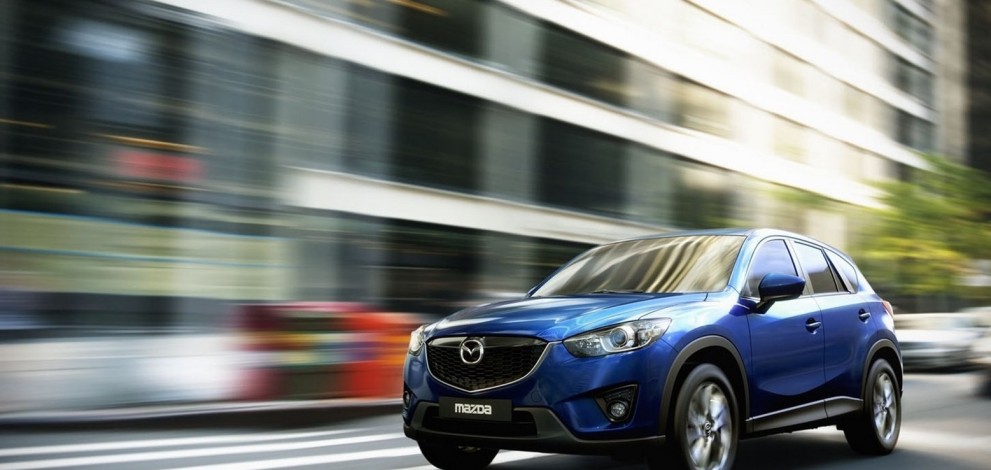

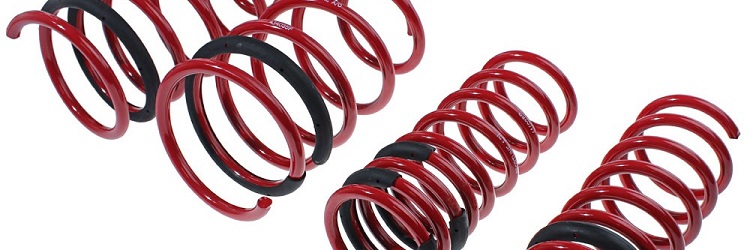
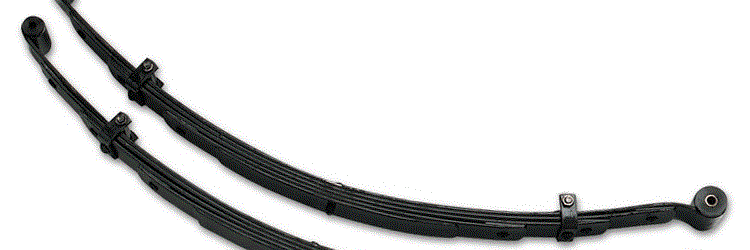

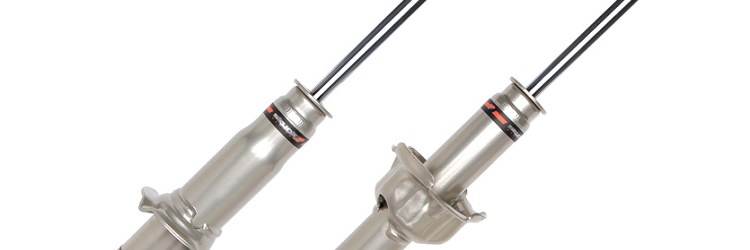
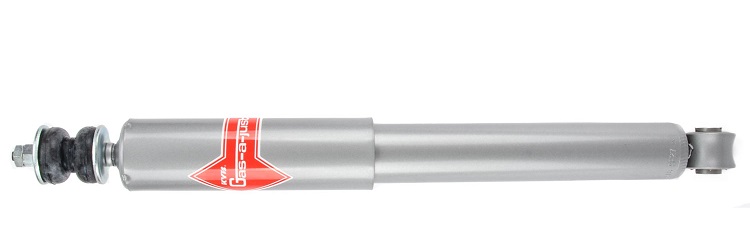
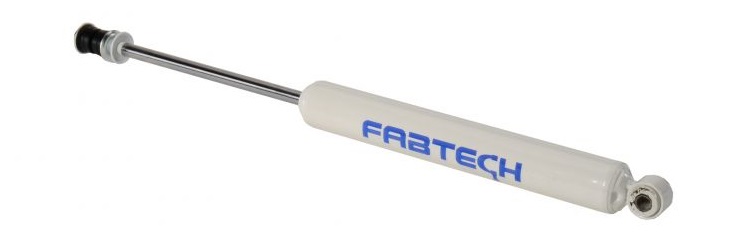

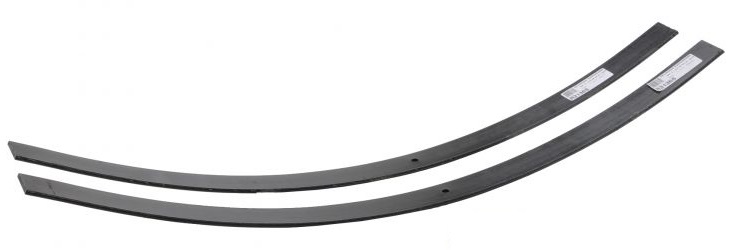
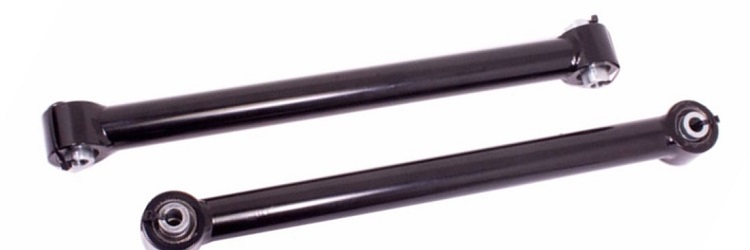
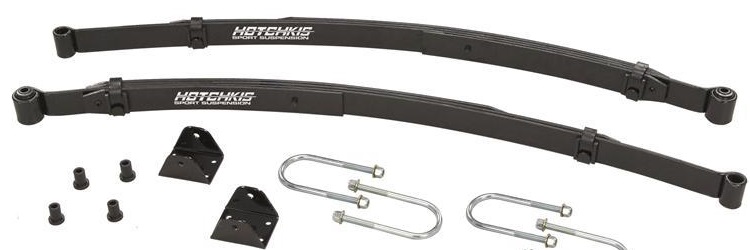
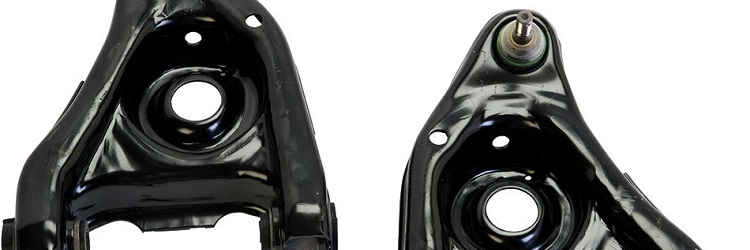
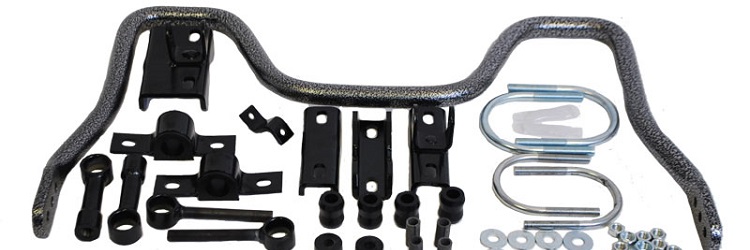


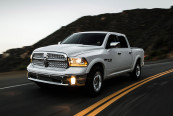
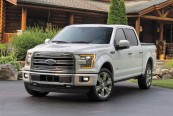
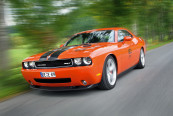

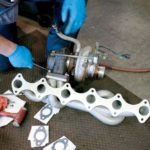


Any info on availability of no hop kit for 2010 dodge challenger 5.7 litres 6 speed manual transmission?